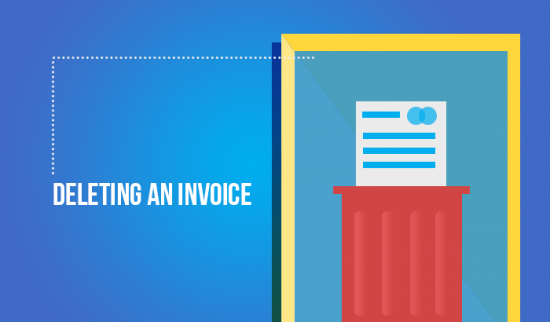Here's a bit of an Accounting 101: You can't delete a finalized invoice. And you shouldn't.
However, by popular demand, we've come up with a way to fix mistakes on your invoice without making a mess out of the sales numbers. Below, I will tell you a little about the correct way of taking advantage of the new "Delete invoice" function and how you go about using it.

Credit note it
So, you've agreed on the terms with your customer, sent them an invoice for the job and then figured that there was a minor mistake that might change the course of the whole project. You open that invoice, change the details and send it off. Now your customer has two invoices from you.
This is OK if your customer is courteous enough to bin the first invoice and forget about it.
But what if that's not the case? It might pop up somewhere down the line in the future: it can get paid twice, a customer can demand a refund based on the payment they've made or they can get a new accountant that will get confused by such paperwork.
And there's nothing in the world which can upset an accountant more than untraceable paperwork, such as duplicate invoice number with different figures on them.
So cover yourself from any trouble, create a credit note. Your customer now has a confirmation that the first invoice was cancelled and the new one created in its place. It's simple to track such a transaction, even after a few years have passed and you have created many more invoices.
Test the waters first
You wouldn't be getting a tattoo if you weren't 100% sure about it, right? So, before comitting to a transaction with a customer send them a quote or keep your invoice in "Drafts".
A quote can be negotiated and a draft can be adjusted. Once you've finalize the invoice, it's permanent. And just like a laser tattoo removal, you need to use a special procedure - a credit note - to get rid of that invoice.
I still want to delete the invoice
OK, so you still want to delete that invoice. You can now delete your invoice permanently in Debitoor, provided that you have not reported it to the tax authorities. And as mentioned in the above, I would not recommend that you delete an invoice if you've already sent it to your customer, even if the software now allows you to do this.
If the invoice in question was included in a VAT report you have submitted with Debitoor, the program won't allow you do delete it. But if you have just created an invoice and realized there was a slight mistake on it you just have to fix, you can now delete the invoice permanently and create a new one instead. Also, this way, you will be able to re-use your invoice number in case you have made a mistake.
What happens to the invoices I have already deleted?
If you've used the previous "Delete" option in Debitoor - which created a credit note of your invoice and stored it in a folder marked by a bin icon - you'll find all of those "deleted" invoices and credit notes under the "Done" tab. They will still have a "bin" symbol on them do distinguish them from the other invoices.
The new delete invoice feature is available on any Debitoor plan, and I hope you'll find it useful in cleaning up your invoice overview.
